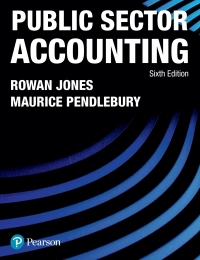What are the most important concepts to remember when creating a business report?
How do you ensure fairness?
How do you ensure feedback?
How do you decide what data to present? And how?
What are the best techniques for reviewing and proofreading?
Create Effective Charts As you create charts, focus on the following criteria: (1) title descriptiveness, (2) focal points. (3) information sufficiency, (4) ease of processing, and most import- ant. (5) takeaway message. In the following pages, you will find a discussion of each of these criteria. Also, you will find less effective and more effective examples for each major type of chart. Each of the examples is supplemented with explanations about these five criteria. Title Descriptiveness Most readers look first at the chart's title to grasp its mes- sage. Thus, the title should explain the primary point of the chart. However, it must be short enough for the reader to process quickly (generally less than ten words). In some cases you may add a subtitle if the short title is not sufficient. Consider Figure 12.2, which illustrates identical information with a less effective and more effective line chart. In the less effective chart on the left, the chart title is a short and relatively unhelpful phrase, "Staff & Service Ratings. By contrast, the chart title in the more effective chart on the right uses a title and a subtitle. The main title, "Improvement in Staff & Service Ratings, uses the first word to immediately point out the main theme of the chart. The subtitle, in just seven words, accentuates the idea that the improvement was intentional or goal-based ("Raising Our Performance") and that the improvement far exceeded that of primary competitors. Focal Points A chart should draw the reader's attention to the most critical rela- tionships and ideas. Much like unified paragraphs (Chapter 6), in which all sentences focus on one main idea, each of the chart's focal points should support one main idea. The focal points can be visually generated in many interesting ways--for example, font choices (bold, italics), color, size, and callout boxes. In the more effective line chart in Figure 12.2, a variety of focal points highlight the improvement in staff and service ratings at the Prestigio. The callout box centered in the chart directs the reader to the point in time when the Prestigio launched its staff and service initiative, allowing the reader to trace the improvement in ratings since that Create Effective Charts As you create charts, focus on the following criteria: (1) title descriptiveness, (2) focal points. (3) information sufficiency, (4) ease of processing, and most import- ant. (5) takeaway message. In the following pages, you will find a discussion of each of these criteria. Also, you will find less effective and more effective examples for each major type of chart. Each of the examples is supplemented with explanations about these five criteria. Title Descriptiveness Most readers look first at the chart's title to grasp its mes- sage. Thus, the title should explain the primary point of the chart. However, it must be short enough for the reader to process quickly (generally less than ten words). In some cases you may add a subtitle if the short title is not sufficient. Consider Figure 12.2, which illustrates identical information with a less effective and more effective line chart. In the less effective chart on the left, the chart title is a short and relatively unhelpful phrase, "Staff & Service Ratings. By contrast, the chart title in the more effective chart on the right uses a title and a subtitle. The main title, "Improvement in Staff & Service Ratings, uses the first word to immediately point out the main theme of the chart. The subtitle, in just seven words, accentuates the idea that the improvement was intentional or goal-based ("Raising Our Performance") and that the improvement far exceeded that of primary competitors. Focal Points A chart should draw the reader's attention to the most critical rela- tionships and ideas. Much like unified paragraphs (Chapter 6), in which all sentences focus on one main idea, each of the chart's focal points should support one main idea. The focal points can be visually generated in many interesting ways--for example, font choices (bold, italics), color, size, and callout boxes. In the more effective line chart in Figure 12.2, a variety of focal points highlight the improvement in staff and service ratings at the Prestigio. The callout box centered in the chart directs the reader to the point in time when the Prestigio launched its staff and service initiative, allowing the reader to trace the improvement in ratings since that







